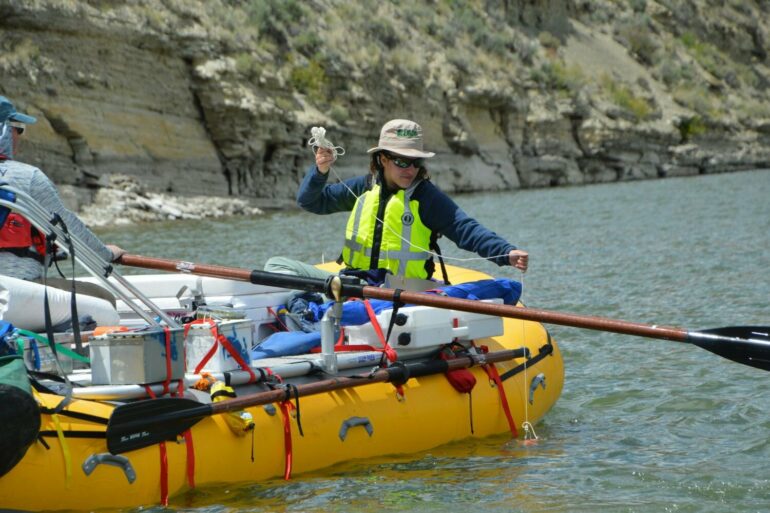A new testing technique developed using synchrotron light could significantly improve how we monitor the effectiveness of remediation practices for removing selenium contamination from mining activities.
Selenium is a naturally occurring nutrient that humans and animals need—in small quantities—to stay healthy. However, exposure to higher concentrations can cause neurological problems in humans and death and infertility in wildlife and cattle.
Mining can result in selenium and other substances running off into nearby soil and water bodies, potentially accumulating over time—even if mitigation strategies such as manufactured wetlands or selenium-removing bacteria are in place.
“We need mining to get certain resources out of the ground,” says Heather Shrimpton, a postdoctoral fellow at the University of Waterloo (Department of Earth and Environmental Sciences). “We can’t just rely 100% on recycled materials yet. So, it’s important that we have techniques that can lessen the impacts that mining has on people and the environment, and my technique can help with that.”
Until now, there has been no way to determine whether selenium is likely to permanently dissipate as a result of remediation efforts, or whether it is being absorbed in nearby creeks or riverbanks.
Shrimpton and colleagues found that selenium isotopes (which are the same element as selenium but have different atomic masses) can be used to determine what’s removing this contaminant from water. Changes in the isotopes signal whether selenium is being removed and whether the removal is permanent. Shrimpton’s study is published in the journal Environmental Science and Technology.
“We need a technique like mine to check if cleanup systems are working—it’s to test to see whether or not we need to do better,” said Shrimpton.
In the lab, Shrimpton and her team replicated a well-known remediation strategy called reduction which uses sulfur-reducing bacteria to trap selenium in a solid form. In nature, reduction causes the selenium to stick to gravel and sand in water bodies.
Using the Canadian Light Source (CLS) at the University of Saskatchewan (USask), Shrimpton analyzed the isotopes of these solid selenium samples. She found that adding sulfur in specific amounts to selenium prevents the contaminant from mixing with liquids again, which means that the removal from water can be permanent. The extent of the change in the isotopes, she says, confirmed it was the reduction process alone that was responsible for the change.
“The Canadian Light Source let me gather extra information on the molecular scale, so I knew what was happening, and I could say, ‘That’s it, that’s what did it,'” said Shrimpton. “It’s one piece in solving the puzzle.”
Now that the technique has proven effective in the lab, Shrimpton and her team plan to test it at mine sites and expand their study to include other environmental mining pollutants such as mercury.
More information:
Heather K. Shrimpton et al, Selenite Stable Isotope Fractionation during Abiotic Reduction by Sodium Sulfide, Environmental Science & Technology (2024). DOI: 10.1021/acs.est.4c03607
Provided by
Canadian Light Source
Citation:
Better monitoring of mining remediation: Selenium isotopes are good gauge of clean-up efforts (2024, October 4)



